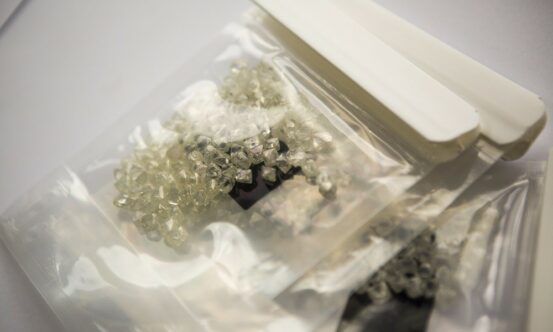A quick note before Sight 9 – it’s going to be small, but it will take place. De Beers is adapting to the market, or as some may say, they are playing it by ear. The company is trying to meet the changing needs of its clients. Sadly, these changing needs seem mostly like detrition.
According to one definition, detrition means a wearing away by friction.This seems to size up the current situation aptly. Manufacturers are tired, worried and worn down by the past year’s uphill battle to keep their business running, while retaining as much of their workforce as possible, together with the backing of their banks. This process is not simple and like everyone else in the market, miners have to adapt as well.
Sight 9 expectations
The market has very little need for additional rough diamonds at this point, especially with Diwali on the horizon. During the 10-day holiday break (November 6-16), Indian manufacturing facilities will close down; therefore, there is no need for much rough during this break even in the best of times.
Thus, November’s Sight will be very small, estimated at $250-$300 million. And that is the ITO, not what Sightholders will buy. As part of the rolling changes, De Beers is now offering Sightholders the opportunity to defer their entire Sight allocation, 100% of their November ITO to December, with the understanding that currently Sightholders don’t need goods.
Most goods are expected to be deferred, according to one Sightholder, up to 80% of them by value, resulting in a Sight totaling a meager $50-$60 million. This begs the question, if the industry does not need more rough, then why buy at all? There are several reasons: First, because there are some shortages in polished that need to be fulfilled. Sightholders can now ask for goods not in their ITO, instead of their ITO goods, to meet specific needs.
Second, polishing facilities outside of India are working and need to keep busy. Finally, the difficult financial times have banks worried. According to one insider, there are a few Sightholders that need their bank to see that they are active.
The new ITO flexibility announced in August that gave Sightholders the option to redistribute their allocations for the next six Sights had one large stipulation: they had to request 50% of the goods in the last three Sights of 2015 (Sights 8-10) and the remaining 50% in early 2016 (Sights 1-3).
[two_third]
For this year, Sightholders chose to delay as much as they could to Sight 10 in December. With the large scale refusals and deferrals at the last Sight, and the small upcoming November one, the ITO for the December Sight is estimated in excess of $1 billion. It does not matter how good the holiday season proves to be, the industry simply won’t – and maybe cannot – absorb $1 billion worth of goods at the close of the year.
De Beers obviously knows this and is not likely to insist that their clients buy everything and at some point may find it necessary to ease the ITO commitments. The company will have no choice but to close the year with much lower sales than those forecasted even a couple of months ago.
[/two_third][one_third_last]
” It does not matter how good the holiday season proves to be, the industry simply won’t – and maybe cannot – absorb $1 billion worth of goods at the close of the year.”
[/one_third_last]
With reduced demand, supply via Botswana’s own rough diamond supply channel Okavango Diamond Company (ODC) is not as much as it planned, and it will possibly skip the next selling week altogether. The current market is proving bad for the country’s economy, which heavily relies on diamond revenues.
De Beers Discounted Sales
De Beers’ supply contract states in section 7: “De Beers will use its reasonable endeavors to ensure that boxes of the same description are priced on the same basis.” This means that they cannot sell the same box during the same Sight at different prices.
The exception to this are the Specials, the 10.8 carat and larger diamonds. They are not part of any standard box and the agreement regarding those goods is that the price is negotiated between De Beers and the client.
Because of this, the discounted goods De Beers sold to a few Sightholders this summer and again in October were a combo deal: take standard boxes at full price and get Specials at a price that is very lucrative. In effect, the total bill reflected a deep discount.
One of the outcomes of this was, as stated in the past, a very negative sentiment on the part of those Sightholders who didn’t get the sweetheart deal. Others felt that if the company could in practice lower prices for some, it could lower prices for all.
It must be noted that a few of the companies that got the deals did not rush to the market selling goods at deep discounts. Instead, they manufactured them. That was the ideal scenario for De Beers. A few others did sell at deep discounts, at a loss, and may have hurt De Beers’ long-term ability to continue with the practice.
After Rob Bates and Chaim Even Zohar discussed this, De Beers may find that repeating the practice again in November or December will be a little tricky and could carry a customer relations cost they don’t want to pay.

